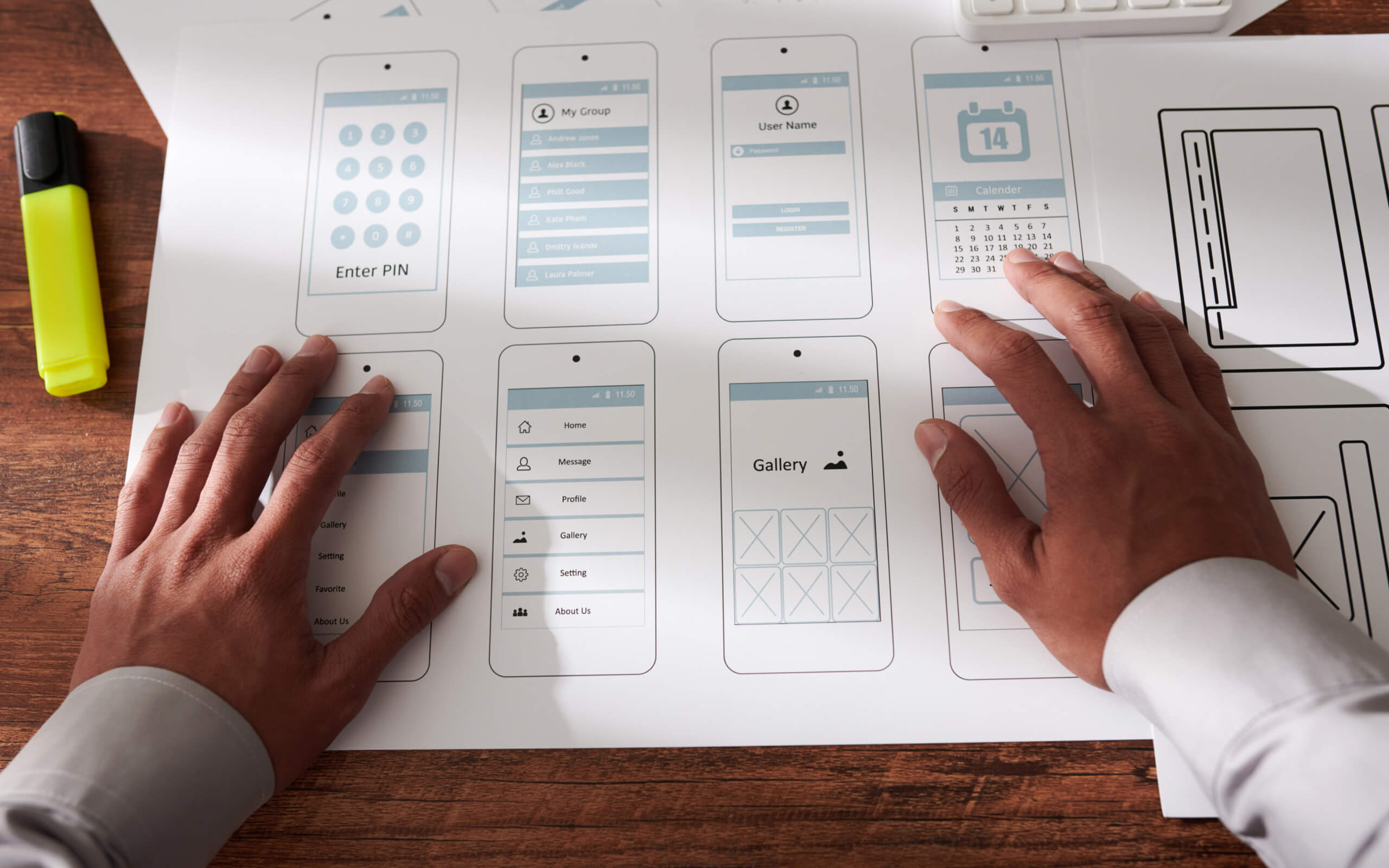Foreword
Looking to establish a frictionless custom application development process that not only boosts your business operations but also enhances your professional standing? Your search stops here!
Our article is your comprehensive guide, mapping out every step from ideation to deployment. Here, we're going to uncover all the ins and outs of developing powerful custom applications.
Buckle up and delve into this enriching journey of knowledge that empowers you to propel your business forward with renewed energy!
On the spot
Every custom app has its own arduous journey from planning to production before it is seen and loved by millions. And here are the 11 steps you’ll have to take:
⦿ Determine objectives
⦿ Conduct market research
⦿ Research existing solutions
⦿ Decide what features will be in the app
⦿ Make a plan and choose technology stack
⦿ Build an MVP
⦿ Create the application
⦿ Perform quality assurance
⦿ Launch the app
⦿ Collect user feedback
⦿ Provide post-launch maintenance and support
If you want to discover more details about the stages of custom app development - welcome to read further!
Step #1 — Determine Objectives and Requirements
This stage acts as the groundwork upon which the entire project is built, much like the cornerstone of a building. During this phase, the focus should be centered on identifying project requirements and defining the app's objectives and goals.
Conduct a Thorough Analysis of the Business Needs
As an IT professional, you recognize the value of a deep dive into your business needs before initiating any development process. This first step ensures that the app you create is in alignment with your company's vision, strategy, and objectives. When your app development process is rooted in your business's core needs, it leads to solutions that are cost-effective, efficient, and impactful, thereby making you feel smarter and in control.
Define Clear Goals and Objectives
With a clear understanding of business requirements, you can now define clear project goals and objectives. This clarity is vital to maintaining focus throughout the development process.
Try to answer the following questions:
- What does the project aim to achieve? What problems are you trying to solve? Do you want to scale your business, improve organizational efficiency, or attract more customers?
- What are the specific requirements that the application needs to fulfill to reach its goals?
By clearly identifying these requirements, you can:
- establish a roadmap that will guide the development process;
- allocate resources;
- have a quantifiable benchmark for the project.
Setted goals serve as the yardstick against which you can measure the project's progress and success.
Our Practice
Let's take a look at how we put these insights into practice in developing a custom solution for Abbott.
At the initial stage, we always prioritize comprehensive familiarization sessions with our Clients.
When working with Abbott, we first analyzed their business processes to get a sense of their pain points, aspirations and expectations. During one of the meetings, we found out that they had a lot of disadvantages in the current system.
Such a detailed analysis helped develop a custom software application that not only optimized their operations, but also allowed our Client to create customized programs and seminars which could work entirely offline and could be deployed on any device with the help of MDM.
Step #2 — Conduct Market Research
Once you have determined your goals, you need to make sure that the app is in demand by the market. This stage delivers the direction required to maneuver through the dynamic market.
Identify user requirements and expectations
Understanding what your end-users need and expect from your app is equally vital. This allows you to deliver an app that addresses specific pain points, improving the user experience, and increasing satisfaction.
During this phase, you perform a comprehensive analysis of your target audience and establish detailed user personas. Understanding the specifics of your user base is the key:
- Who are they?
- What are their needs and preferences?
- What issues are they facing that your application could solve?
A keen awareness of these details is essential to create an application that serves its purpose and resonates deeply with its users.
If you're building an app as an extension of an existing business, you can use current customers as a source of information for research.
Remember that developing an app without conducting market research could potentially lead to a significant squandering of your time, finances, and other resources.
Our Practice
When developing an application, we are always user-centered. In the Abbott project, our main goal was to improve existing system processes to make people's lives easier and align them with a common goal.
Goal setting kept the team motivated and focused, helping us stay on track to deliver the expected results. In this project we set out to create a first-class custom learning and development solution, which now allows our Client to measure the efficiency of the sales enablement program, and assess the skills of their existing employees.
Step #3 — Research Existing Solutions
During this phase, the main goal is to study and understand similar solutions that already exist on the market. It's about identifying what works well in these solutions, what doesn't, and how you can differentiate your app from others, making it unique.
By dissecting existing applications, you also gain more insight into user expectations and industry standards. In short, it's a strategic move that can save time and resources while maximizing the impact of your final product.
Our Practice
We researched the Healthcare and Pharmaceutical market to make the most personalized software and now Abbott is delivering a bespoke unified L&D experience to their global workforce.
Step #4 — Decide Your App Features
Based on the conducted business, users, and market research, it's now time to define the features that'll make your app. It is important to remember that successful apps don't necessarily need a multitude of them but ones that effectively solve a problem or fulfill a need. It's also beneficial to prioritize features based on their importance to the overall functionality of the app.
Adding too many features to the app is a widespread problem. Note that every additional one escalates the overall cost and lengthens the development timeframe (we share useful takeaways on estimating development time and cost in our recent articles "How to Estimate Development Time for Your Software Project?" and "How To Estimate Software Development Costs for Your Project?").
Striking a balance between essential features and simplicity will help your application resonate with its intended user base.
Step #5 — Make a Plan and Choose Technology Stack
Create a Detailed Project Plan
Once you have a clear understanding of what you're trying to achieve and what features you want to see, it's time to devise a plan of action. A comprehensive project plan outlines the steps required to achieve your goals, the resources needed, and the estimated timelines. With such a plan, you're more likely to stay on track and avoid unnecessary delays or costs, thus driving business results and making you feel more confident and optimistic about achieving your goals.
Defining the Architecture and Technology Stack
Choosing the right architecture and technology stack for your custom app solution is akin to laying the foundation for a robust software. It's a strategic decision that affects the application's performance, scalability and security, and hence, it's crucial to have knowledgeable and experienced software developers involved in this stage. Taking the time to choose wisely will simplify your life in the long run and enhance your professional standing.
Our Practice
Our planning phase with Abbott started with a meticulous project plan, outlining the timeline, deliverables, and milestones. We believe in maintaining complete transparency with our Сlients, so we involved them in the planning process, enabling them to feel in control.
We crafted a detailed project plan and used Lean Startup methodology. We provided regular 2-week sprints and showed demos to the Client’s team every Friday to get their input. This not only kept them informed about the project status but also helped manage changes efficiently without blowing up the budget or delaying the deliverables.
Step #6 — Build an MVP
Now it’s time to develop a simplified version of an application that contains its core features.
Wireframes
MVP development begins with creating wireframes and prototypes that act as the initial visual guide for your application's structure and user interface. A wireframe forms the app’s layout and helps with understanding its structure before development begins.
Design User Interface and User Experience
Next, it's crucial to implement a responsive design that ensures smooth application functioning across different devices. With the diversity in user device preference today, your application needs to deliver a consistent experience, whether it's accessed from a smartphone, tablet, or desktop. A well-designed software application isn't just visually pleasing; it's also intuitive and easy to use. Imagine the pride in owning software that not only functions exceptionally but also delivers a remarkable user experience.
Development
Then you set up a development environment, where you configure the necessary hardware, software, and network setup for developing applications. This setup acts as the playground where your application will start taking shape.
Finally, the development itself starts where all the planning, designing, and setting up culminates into action. This is where you start building your application, transforming the concepts and plans into a functioning software with predefined features.
Remember, creating an MVP is not just about development, it's about building a foundation for your application that will guide its future evolution. We talk more about this in our article "What is MVP in software development and how to build it".
Our Practice
We aim for a balance of aesthetics and usability to ensure the solution not only looks good but is also intuitive and user-friendly. When developing a custom solution for our Abbott, we prioritized creating an engaging and easy-to-navigate interface. We incorporated elements reflecting their brand identity for a personalized touch and designed an intuitive user flow.
Our customer expected to have an MVP in four months, so we acted quickly and iterated even faster.
Step #7 — Create the Application
Here starts a full-scale development of your app. This phase includes:
- engineering;
- integrating functionalities;
- ensuring the application aligns with the design from the wireframes and prototypes;
- code review and testing.
Follow Engineering Standards and Best Practices
Adhering to engineering standards and best practices is a fundamental aspect of developing a custom app. It ensures the code's readability, maintainability, and consistency, reducing bugs and making it more efficient and secure. By standardizing your approach to engineering, you drastically simplify your work and the work of your team, creating a full environment of confidence and accomplishment.
Write Modular and Reusable Code
One of these standards — the backbone of efficient development — is writing modular and reusable code. Using micro frontend and microservices to create independent, reusable modules, you increase efficiency and reduce redundancy, thereby optimizing your resources. Your software becomes easier to manage, debug and scale.
Conduct Regular Code Reviews and Testing
Code reviews and regular testing are two more gold standards of development. They help detect bugs, improve code quality, and encourage collaboration among team members. This practice not only simplifies your life by catching issues early but also boosts your confidence and sense of pride in delivering high-quality software.
Generally, this phase culminates in the full creation of the application from an MVP, which includes polishing the user interface, optimizing performance, and preparing for deployment. The initial idea is transformed into a full-fledged, operational software application, ready for user interaction.
Our Practice
Our engineering practices lie at the heart of our custom development process. With Abbott, we adopted a range of best practices to ensure the quality of our code. We followed a standard development convention where every piece of code was reviewed by a different member of the development team before it was merged into the main codebase. This practice helped us catch and fix bugs early, improving the overall reliability of our software.
Transform Your Operations
Embrace the power of a custom application tailored specifically to your business needs

After development and before deployment, you need to test the app on all platforms.
Develop a Comprehensive Testing Strategy
A comprehensive testing strategy is integral to the development process. It ensures that all code meets the defined requirements and functions as expected, preventing unexpected issues down the line. An effective approach with multiple testing methodologies can boost your confidence in your product and give you peace of mind knowing that the software performs reliably (you can find out more about testing in our article "The Main Types of Software Testing Methodologies and Testing Based on Business Objectives").
Perform Functional and Non-functional Testing
Functional and non-functional testing are very important parts of this strategy. While the former verifies that each function behaves as expected, the latter checks the software's performance, usability, and security. The goal is to ensure each component of your application functions correctly in isolation and when interacting with other components.
Knowing that your software can withstand high loads, remain secure against potential threats, and offer a seamless user experience will grant you peace of mind about your business’ operation.
Implement Automated Testing Processes
Writing test cases for automation with tools and scripts drastically enhances speed, efficiency and accuracy of the QA process. Such an approach reduces the risk of human error, allows for continuous testing throughout the development, expedites the detection of bugs and facilitates faster deployments.
Quality assurance also involves maintaining high code quality and implementing bug tracking systems that help to efficiently identify, report, and resolve any issues that may arise during development.
Our Practice
With Abbott, we used AQA tools to regularly bug-proof code. We implemented both unit testing (for individual components) and integration testing (to test how they worked together). This regular QA process ensured that our software was always in a releasable state, giving us and Abbott the confidence in its stability and functionality.
This phase marks the transition of your application from a development environment to production. The first thing is to select an appropriate hosting environment that fits the application needs in terms of scalability, reliability, and security.
The next step is deployment. This involves setting up two environments: staging and production itself. The staging environment mimics the production one and is used for final tests before the actual launch. It allows you to catch and resolve any last-minute issues before your application reaches the end-user.
Finally, your application is ready to go live. It is deployed to the production environment, where it becomes accessible to everyone.
Step #10 — Collect User Feedback
Once you launch your app, start gathering user feedback to understand how well the application is meeting customer expectations and needs.
This feedback provides direct insights into user experience and satisfaction and helps identify potential areas for improvement. It can be collected through:
- surveys;
- direct interviews;
- behavior analysis within the application.
These invaluable insights should be used to inform updates, ensuring the application continues to evolve along with user needs. After all, a successful custom application is one that continuously adapts and improves based on customer feedback.
Step #11 — Provide Post-Launch Maintenance and Further Support
Monitoring and Resolving Any Post-deployment Issues
Post-deployment, your software may encounter unexpected issues like misperformance, bugs, or UX problems. Post-deployment monitoring is what’s needed in this situation to ensure the app’s seamless operation. Quick identification and resolution of any issues will enhance user satisfaction, prevent business processes disruption and simplify your life by avoiding large-scale problems down the line.
Post-launch application support also involves ongoing improvement, feature updates, and handling user feedback. It's important to stay updated with technological advancements and, as mentioned, evolving user needs to keep an application competitive. Feature updates extend the life cycle of your application as well.
Furthermore, it's essential to have robust data backups and disaster recovery plans in place. In the event of a data loss or a server crash, sound recovery measures can ensure application's data integrity and continuity.
In essence, post-launch maintenance and support is a continuous cycle aimed at refining your application.
Our Practice
Deploying and maintaining custom software effectively are as crucial as building it, and we understand this aspect profoundly.
Our partnership with Abbott didn't end with deployment. After the system went live, we kept a close eye on it, looking out for any potential issues or bugs that could arise in the live environment. We invented new roles to support on-site trainers running L&D campaigns and created a dedicated support team that worked 24/7 when the company hosted a major training event. The support group has been in place for 2 years now.
As a result:
⦿ we created a customized solution for assessing, tracking, and improving the company's sales team's skills;
⦿ the solution is online and available offline, so trainers don't have to depend on unstable Internet connections in remote locations;
⦿ the statistics module collects data for the HR team and is integrated with their system, allowing the Client to make more informed hiring decisions and focus on training initiatives;
⦿ MDM allows administrators to deploy applications quickly and securely.
We encourage you to fully check out this success story here.
Wrapping Up
The process of developing a custom application is a sequence of thoughtful stages, beginning with defining your objectives, and not ending even on post-launch support. Remember, the goal of developing a custom app is not only to meet your unique business requirements but also to provide a seamless experience to your users.
If you need a reliable partner beside you who will instill a sense of pride, confidence, and accomplishment in you, helping implement all of this with their expertise — fill in the form below and we will be happy to become one!

